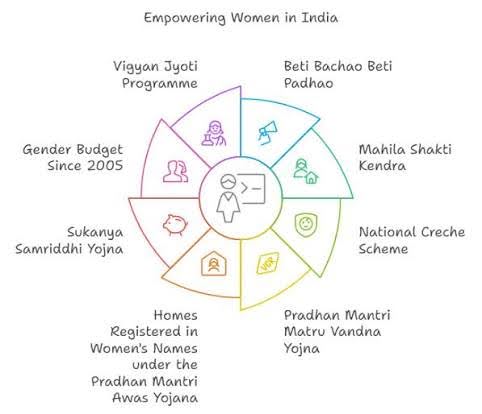Why in News: Uttar Pradesh launched India’s first Women’s Economic Empowerment (WEE) Index to track women’s participation across five levers, highlighting the need for gender-disaggregated data to achieve inclusive growth.

Introduction
- Women contribute only 18% to India’s GDP though they form nearly half the population.
- India’s $30 trillion economy target by 2047 hinges on inclusive growth, which requires gender-disaggregated data to inform policy and investments.
Current Challenges
1. Low Female LFPR – Though improved to 41.7%, only 18% in formal employment.
2. Invisible Contribution – 196 million employable women remain outside the workforce.
3. Data Deficit – Existing indices rarely disaggregate by gender; systemic gaps remain hidden.
4. Gender Budgeting Gaps – Often limited to women’s welfare schemes, not mainstreamed across sectors.
5. Structural Dropouts – High dropout rates post-Class 12 and at higher education stages limit employability.
The WEE Index (Uttar Pradesh Model)
1. First-of-its-kind District-level Tool – Tracks participation across 5 levers:
- Employment
- Education & skilling
- Entrepreneurship
- Livelihood & mobility
- Safety & infrastructure
2. Catalytic Impact – Eg: UP transport sector redesigned recruitment + restrooms for women staff.
3. Beyond Participation Rates – Identifies structural barriers (e.g., skilling–entrepreneurship–credit gap).
4. Systematisation – Enables department-wise action plans and monitoring.
Why Gender-Disaggregated Data Matters
1. Visibility → Policy Reform – Inequities, once visible, prompt corrective action.
2. Targeted Interventions – Informs recruitment, infrastructure, and finance reforms.
3. Strengthens Gender Budgeting – Enables application of gender lens across all expenditure heads.
4. Enhances Accountability – Empowers local governments with data-driven planning.
Way Forward
1. Universal Gender-disaggregation – Integrate into all MIS (transport, MSMEs, housing, energy).
2. Capacity Building – Train states/local bodies to collect and use gender data effectively.
3. Outcome-based Tracking – Monitor retention, re-entry, leadership roles, not just participation.
4. True Gender Budgeting – Apply gender lens to every rupee spent, beyond women’s schemes.
5. Scaling Models – Replicate WEE Index in states with trillion-dollar ambitions (AP, Maharashtra, Odisha, Telangana).
Conclusion
Tools like the WEE Index can shift women from the margins to the mainstream of India’s growth story, making the $30 trillion aspiration by 2047 achievable.
UPSC Relevance
GS Paper 1 (Society): Issues related to women, gender inequality.
GS Paper 2 (Governance): Role of data, gender budgeting, state-level initiatives.
Mains Practice Question
Q. “Inclusive growth requires making women visible in the data that drives policy and investment.” Discuss with reference to India’s Women’s Economic Empowerment (WEE) Index. (250 words)
